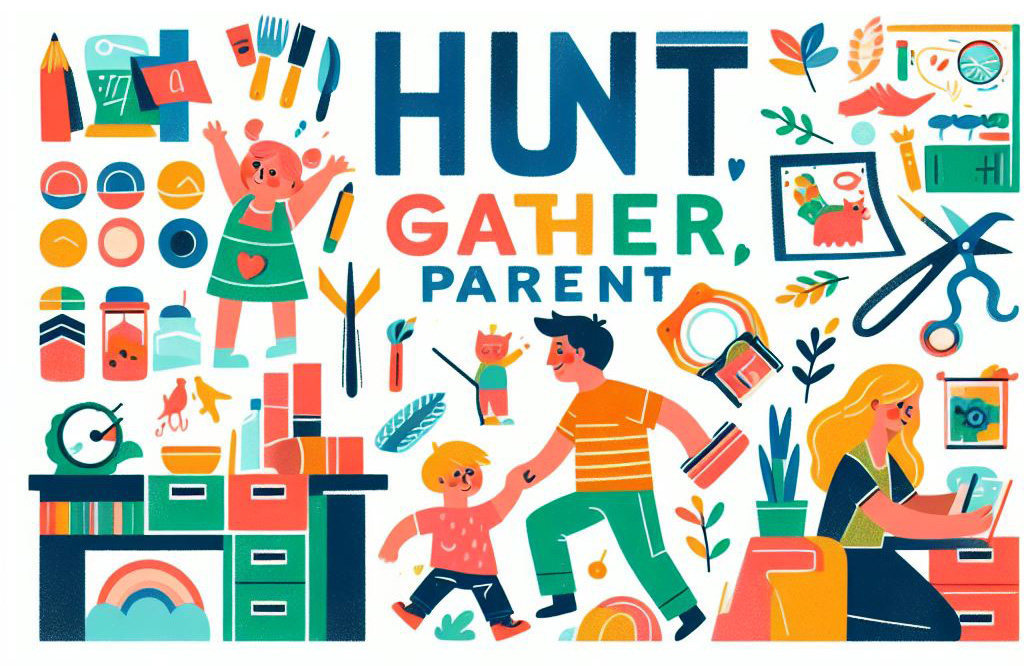
Hunt, Gather, Parent by Michaeleen Doucleff: Book Notes
Hunt, Gather, Parent: What Ancient Cultures Can Teach Us About the Lost Art of Raising Happy, Helpful Little Humans
by Michaeleen Doucleff
Goodreads
Many of the things we take to be the “right” way to raise kids (at least in western civilization) are in fact contrary to how humans have been raising kids through our history. Examples of this include toys, worrying about “self-esteem”, and praising kids a lot.
In Hunt, Gather, Parent, Michaeleen Doucleff starts by showing that many of these ideas in fact originate from the times and needs of the industrial revolution, and are not particularly compatible with human nature. Instead, she seeks to understand how parenting had been in earlier times.
Towards this end, she time with three communities that practice parenting as their ancestors had for many generations: Maya, Innuit, Hadzabe. But these are not communities untouched by the modern world - they all have smart phones, and only the Hadzabe are still hunter-gatherers. Where appropriate, she links to modern scientific studies to underscore the efficacy of what she learns.
In the U.S., we feel this enormous responsibility to “optimize” our children. That often means filling their days with nonstop activities or entertainment. I sure felt this way with Rosy (sometimes I still do). This feeling places a heavy burden on our shoulders and fills our minds with an omnipresent anxiety (e.g., “Oh my gosh, what am I going to do with Rosy for the entire Saturday?”). But the feeling also supercharges our parenting — both the macro and micro. Our knee-jerk reaction is maximal interference.
But that parenting style is not the norm; quite the opposite. The picture the author presents instead is compelling - one that focuses on including the children in the family’s lives, rather than in centering the parents’ lives around the child.
This approach has several other advantages. First, it gives parents a break. Instead of having to schedule, pay for, and participate in endless child- centered activities, parents can lead their normal lives— working or relaxing— while kids follow along, learning as they go. Rather than scheduling your life around your child, you can simply put your child into your schedule. Moreover, humans likely evolved for children to learn by shadowing adults; it’s the way they’ve been learning for at least two hundred thousand years (as we’ll see in the next chapter). So for many kids, learning this way is easier and less stressful than learning through child- centered activities. And it generates less conflict and resistance.
I’m a believer. Let’s dive in to the takeaway parenting tips from the book.
Western Parenting 2.0
Kids naturally want to do whatever parents are doing. They want to help. Let them. Encourage them. Even if they will in the beginning make a mess of things, it’s OK - this is how they learn. In the US, we often avoid this - we send kids out to play while we get chores done. This teaches kids they have no responsibilities in the family.
Don’t worry about entertaining the kids with toys or child-centered activities; instead, involve kids in whatever you’re doing. You’re making dinner? Have the toddler mix things for you. Cleaning up the living room? Have them help put things away. Kids don’t have a separation between “chores” and play, so this activity will itself become play, and it will help the child feel connected to the whole family.
Asking kids to do things:
- The tasks should really be helpful contributions, however small.
- They should be doable.
- Never force a task; we’re training kids to cooperate, not obey.
- The invitation is always to do things together, rather than asking kids to take care of things on their own.
- One option is to “activate” the kid by giving them a hint that a task is needed, rather than asking them to do the task directly. For example, “the trash can is full” can be a hint to them that they could empty the trash can. This teaches kids to pay attention to what is happening around them, which in turn eventually leads to them doing the tasks on their own.
Whenever a child misbehaves, they need more responsibilities.
For older kids, have them take responsibility for setting up their own child-centered activities.
Three ingredients to spark intrinsic motivation:
- sense of connectedness: what the is doing is important to the family
- sense of autonomy: the kids can decide how best to do the task and do it their way. Don’t reject kids ideas how to do things
- sense of competency: challenging enough not to be boring, but also doable

Praise can undermine motivation and generate competition and strife between siblings. Use it very sparingly, and when you do, connect it to maturity (“big girls clean up their own toys”).
Instead of punishments and rewards:
- we are trying really hard to do X. As a member of the family, you need to try hard too.
- connect helpfulness to maturity
- threaten natural consequences (“if we don’t clean up the food, ants will move in”)
Resist the urge to correct a child, especially when they are trying to help. If a child is resisting a request, you’re likely forcing the issue too hard. The child knows what you want; stop asking. Wait and let the child take the lead. Work with the child’s ideas instead of resisting them. Offer simple course corrections, sparingly, while the child is working.
Americans tend to overestimate children’s emotional skills (and underestimate their physical skills). My pediatrician told me to ignore Rosy’s tantrums when she was only eighteen months old. That strategy backfired horribly, making Rosy’s tantrums— and our lives— much worse. Rosy didn’t yet have the skills to calm herself down, and being left alone to cry only fueled the fire in her chest. She needed gentle, calm love. She needed physical connection … See tantrums as a chance for the child to practice calming themselves down, and for you to model calmness— not the time for you, as their parent, to prove a point.
Give the child ample autonomy. The author distinguishes between autonomy and independence, noting that the child should still be connected closely to the family. She describes it thus: “You go about your business and I’ll go about mine, and we’ll always look for ways to help each other as much as possible.” To encourage this, decrease your commands and other verbal input (e.g. questions, choices, requests), and empower the child by training them to handle challenges on their own.
Don’t ask children what they want or offer them choices. Instead, guide them to understand that they are part of the family and need to go along with it.
Older children make great “alloparents” for younger ones. Tell the older the child that they are responsible for the younger, and that they need to be the mama/daddy or “big kid”, and gradually increase their responsibilities.
Dealing with misbehavior
The best way to teach kids to regulate their own emotions is to regulate your own. Don’t yell. When angry, don’t talk at all. Make a request calmly and wait silently for the child to comply. If they refuse, leave or stop paying attention to the child. Never argue or negotiate with a child. Children (and adults!) mirror our emotions, so model the emotions you want.
Responding to negative behavior even negatively signals that that behavior is important and useful.
Don’t give kids choices. No more “Do you want…?” Choices are hard.
Teaching about misbehavior is best done (long) after the misbehavior has occurred. It’s only when the kid is calm that they are amenable to learning.
Trick: discuss family history, and how you did the things that you are asking the kid to do when your parents asked you.
Use inanimate objects as puppets to explain things to kids.
Tell kids about Monsters - they will take you away if you go near the edge of the pool alone!
Reenact problematic behavior through dramas to resolve tension and encourage empathy.
The Formula
Over and over, the author keeps coming back to the “formula” to teach a child a particular behavior: behavior = model + practice + acknowledge:
- model the desired behavior
- offer ample opportunities to practice it
- acknowledge when the child does the desired behavior. This one is interesting: the author goes to great length to differentiate it from praise. It’s a nod, a small smile, an encouraging “hmmm”. A good way to acknowledge the desired behavior is by connecting it to maturity: “you’re such a big girl, you’re already helping to clear the table”.
Notice what’s not in the formula: explanations and lectures, punishments, praise, rewards, negotiations, threats. The big idea is never to force a child to do anything. Instead, encourage.
Final Thoughts
5/5 - I really enjoyed this book (thanks to Joey and Ayesha for the recommendation!). The writing is crisp, the stories vivid and illustrative, and in places it’s backed up by scientific studies.
Perhaps this me being happy to read what I wanted to read: the parenting approach described is much less stressful and demanding than what I commonly see around me, and yet I’d felt guilty for even considering it - for not working diligently to hyper-optimize every waking (and sleeping!) minute of my daughter’s life.
This is despite the fact that while reading this book, I recognized many of the suggested parenting methods in memories from my own childhood (thanks mom & dad & grandma & Venka). I remember fixing bikes, working in the yard, and building and testing various experiments that would eventually become Ecogate.
I recommend this book highly now… but for the final verdict, ask me in 20 years or so.
Comments